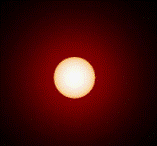Department of Physics and Astronomy: Publications and Other Research

Norman R. Simon Papers
Document Type
Article
Date of this Version
1-20-1970
Citation
Astron. & Astrophys. 6, 183-192 (1970)
Abstract
Evolution with moderate mass loss has been investigated for hydrogen-burning stars whose mass exceeds the critical mass for pulsational stability at the top of the main sequence. A prescription based on minimizing the degree of pulsational instability is used to specify the rate of mass loss. With a zero-age hydrogen abundance of X = 0.70 and electron-scattering opacity, stars of initially 60 - 115 M ʘ become stable before the end of hydrogen burning; more massive stars evolve into unstable pure-helium stars of high mass. The smallest remnant left after hydrogen-burning is 12 M ʘ, for an initial mass of 115 M ʘ. The hydrogen-burning tracks stay close to the zero-age main sequence, and the mass-loss rate is remarkably uniform, 3 x 10-5 M ʘ year-1 • The helium-burning phase is considered for the remnants of initially 100 and > 115 M ʘ. In contrast with the possible cases of no significant mass loss or very rapid mass loss, the assumption of moderate mass loss seems to yield results which are consistent with the relevant observational data, particularly for the most luminous group of Wolf-Rayet stars.


Comments
Copyright 1970 European Southern Observatory